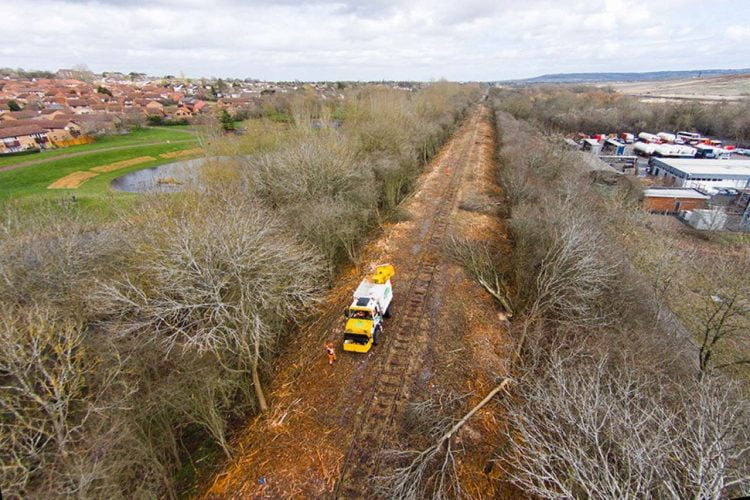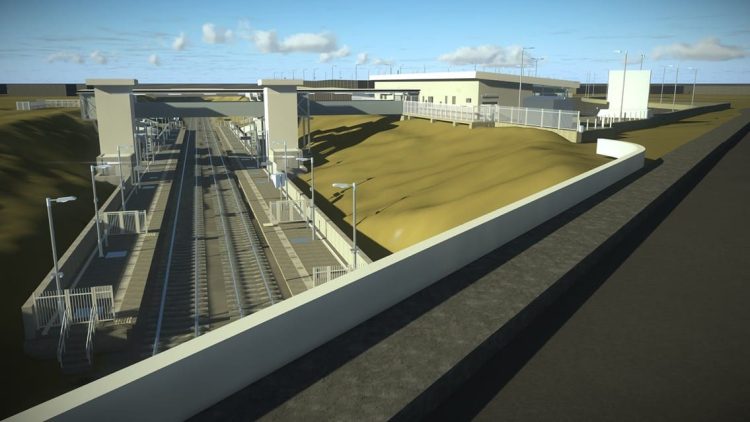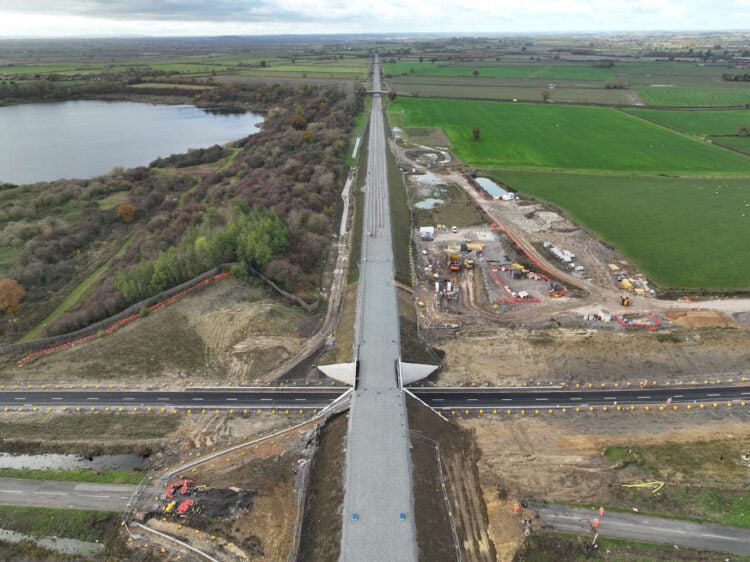NAO finds Government must align Cambridge growth plans with East West Rail plans
According to a report by the National Audit Office (NAO), to maximise the economic benefits of the new East West Rail[1] between Oxford[2] and Cambridge[3], the Government must ensure its growth plans for Cambridge are aligned with its £6-7bn investment in the line.
In the 2017 Autumn Budget, the government announced plans to support economic growth in the region between Oxford and Cambridge with a new road project, building up to one million homes, and investment in East West Rail.
The improved connectivity was intended to make the region more attractive to businesses, new housing, growth and jobs[4]. However, the road project was cancelled in 2021 because of value for money concerns.
 A currently disused section of East West Rail // Credit: Network Rail
A currently disused section of East West Rail // Credit: Network Rail
In July 2023, the Department for Levelling Up Housing & Communities (DLUHC) announced a new long-term plan for locally led housing development and plans to expand Cambridge while the business case for East West Rail depends on development along the rail route[5]. To avoid both projects being at cross purposes, the two departments are working together to align plans ahead of East West Rail's statutory consultation on its route planned for next year.
 What Winslow station could look like // Credit: Network Rail
What Winslow station could look like // Credit: Network Rail
DfT's cost-benefit analysis suggests that the costs of the project may outweigh the benefits, and in 2021 assessed that every £1 spent on the project would result in between 50p and £1.10 in benefits. Since then, the calculated benefits have now reduced to an estimated 30p to 60p of benefits for every £1 spent on connection stages 2 and 3.
DFT has not yet decided what propulsion should be used for the new trains, so the projected costs do not include the costs of electrifying the line, but it is committed to achieving net zero carbon emissions on the rail network by 2050 and wants to remove diesel-only trains by 2040.
 looking west along the earthworks for East West Rail. // Credit: HS2
looking west along the earthworks for East West Rail. // Credit: HS2
According to initial estimates full electrification of the line could cost up to £1 billion, but other options include partial electrification or alternative approaches to full electrification which could be delivered at a lower cost.
A cross-government board has been established by HM Treasury to support the development of a shared vision for growth associated with East West Rail. To provide a better chance of achieving economic benefits from its investment, the NAO recommends that DLUHC, DfT and the Board should establish effective cross-department governance that support the regions' local stakeholder partnerships to focus on achieving East West Rail's benefits.
Gareth Davies, head of the NAO, said “The rationale for East West Rail rests on its wider strategic aims of increasing economic growth in the Oxford to Cambridge region.
“To maximise the economic benefits from its investment in East West Rail, government must ensure stronger strategic alignment between departments and with wider local growth initiatives, so that there is a shared, coherent vision for the future of the region, and the contribution that the East West Rail project will make to it is clear.”
References
- ^ Posts tagged with East West Rail (www.railadvent.co.uk)
- ^ Posts tagged with Oxford (www.railadvent.co.uk)
- ^ Posts tagged with Cambridge (www.railadvent.co.uk)
- ^ Posts tagged with Jobs (www.railadvent.co.uk)
- ^ Posts tagged with Rail Route (www.railadvent.co.uk)